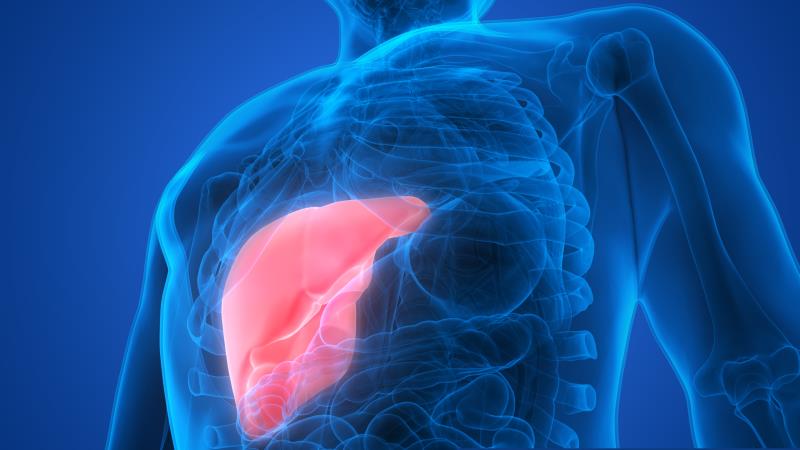Nidufexor lowers ALT, hepatic fat in patients with NASH





Treatment with nidufexor led to significantly reduced serum alanine aminotransferase (ALT) levels and hepatic fat fraction in patients with nonalcoholic steatohepatitis (NASH), according to a phase II study presented at ILC 2020.
This nonconfirmatory, sequential, double-blind, placebo-controlled, multicentre trial involved 121 middle-aged patients diagnosed with biopsy-proven or phenotypic NASH who were randomized to receive nidufexor 50 mg (n=44; baseline ALT 53.2 U/L) or 100 mg (n=37; baseline ALT 72.4 U/L) or placebo (n=40; baseline ALT 63.0 U/L) once daily for 12 weeks. Participants were divided into two cohorts: cohort 1 (nidufexor 100 mg vs placebo) and cohort 2 (nidufexor 50 mg vs placebo). [ILC 2020, abstract GS07]
At 12 weeks, ALT levels were significantly reduced by 31 percent and 33 percent in the nidufexor 50 and 100 mg arms, respectively (14.0 U/L; p=0.038 for 50 mg and 18.8 U/L; p=0.0031 for 100 mg). ALT levels in the placebo arm decreased by 8 percent (2.5 U/L).
“Both dosages of nidufexor resulted in rapid and sustained declines in ALT,” said lead author Dr Richard Aspinall from Queen Alexandra Hospital in Portsmouth, UK.
Majority of the patients treated with nidufexor also achieved a ≥30 percent reduction in hepatic fat fraction, as measured by MRI-PDFF*, compared with placebo (41 and 22 patients in the 50 and 100 mg groups, respectively, vs 32 patients in the placebo group).
Patients who received nidufexor 50 or 100 mg also had a significant reduction in body weight than those who received placebo (1.94 kg; p=0.012 and 2.1 kg; p=0.013 vs 0.31 kg).
“[Of note,] decreases in MRI-PDFF and weight were similar in the 50 and 100 mg nidufexor cohorts,” Aspinall said.
With regard to lipid profile, patients on nidufexor 50 and 100 mg demonstrated 12 and 16 percent decreases, respectively, in high-density lipoprotein cholesterol levels. However, the researchers found no significant changes in total cholesterol and low-density lipoprotein cholesterol levels.
The most common adverse event reported was pruritus, which occurred more frequently in the nidufexor arm than the placebo arm (29.5 percent and 54.1 percent for 50 and 100 mg, respectively, vs 15.0 percent). Most of the events were nonserious grade 1 or 2 in severity, noted Aspinall.
“Signalling through FXR** [is] involved in regulation of hepatic metabolic, inflammatory, and fibrogenic processes … Nidufexor is a potent nonbile acid FXR partial agonist with a clinical and preclinical profile that supports its use in NASH,” said Aspinall.
“Nidufexor was generally tolerated at a daily dose of 50 and 100 mg for … 12 weeks and showed [a] safety profile consistent with the class of FXR agonists,” he added.
“This study reinforces the likely utility of FXR agonism in NASH pharmacotherapy and further defines the range of potential class effects,” Aspinall concluded.
*MRI-PDFF: Magnetic resonance imaging-proton density fat fraction
**FXR: Farnesoid X receptor